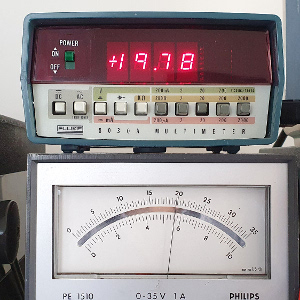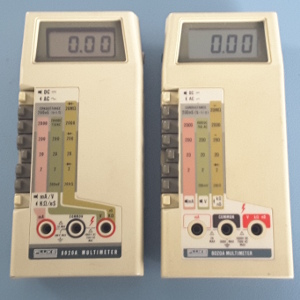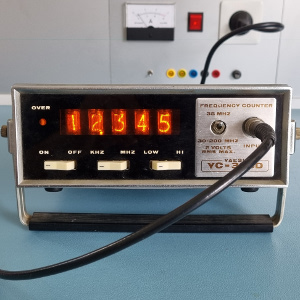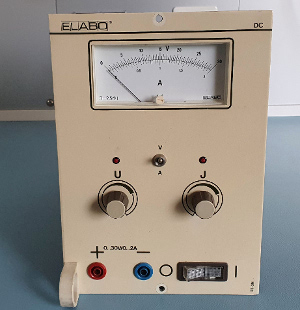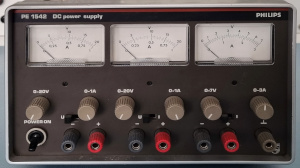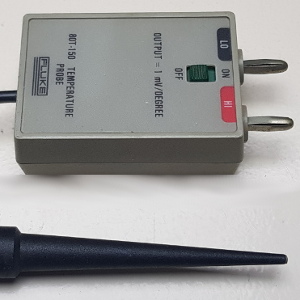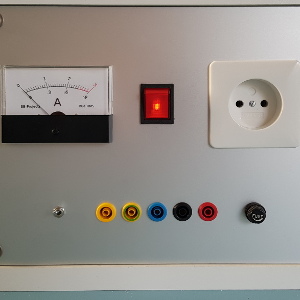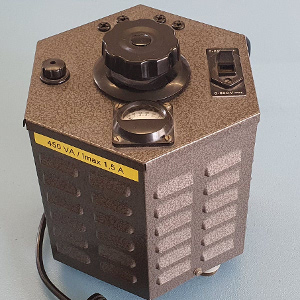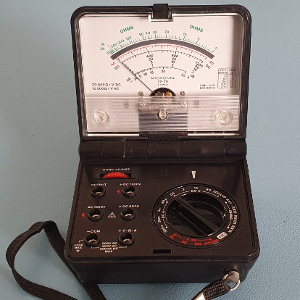My Lab
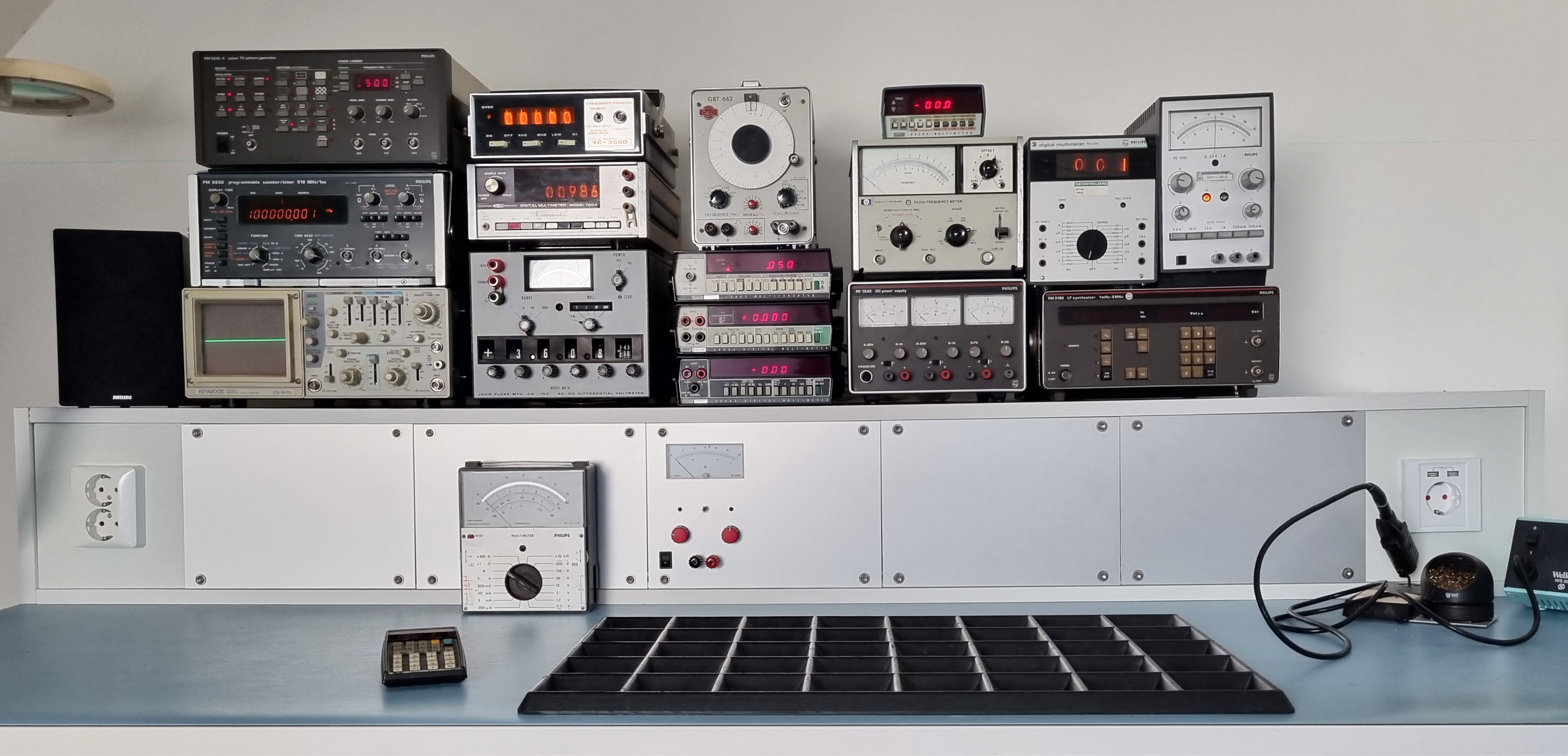 My vintage lab in November 2022
My vintage lab in November 2022
Click here to jump to the equipment.
For as long as I can remember I have been fascinated with electronics, and especially measuring instruments. Unfortunately, I didn't really have the budget to buy expensive measuring instruments back in the day. Can you imagine how happy I was to find out that Fluke's European factory was located in my hometown? I managed to arrange an internship there for my education. That was really like seventh heaven for me. I learned more there in about 9 months than I did in the 4 year education itself.
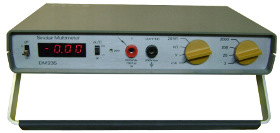 I can't remember my first analog meter.
I must have had one.
But which one it was, where I got it and where it went is a mystery to me.
My first digital multimeter was a Sinclair DM235.
That was really a hobby thingy.
It was not very accurate.
Especially the zero offset drifted everywhere.
I still have this meter, although the plastic is falling apart more and more.
I can't remember my first analog meter.
I must have had one.
But which one it was, where I got it and where it went is a mystery to me.
My first digital multimeter was a Sinclair DM235.
That was really a hobby thingy.
It was not very accurate.
Especially the zero offset drifted everywhere.
I still have this meter, although the plastic is falling apart more and more.
Via Fluke I was able to obtain my first serious measuring instruments and those very same instruments still work today and some of them are used almost every day.
Unfortunately back in the day Fluke had no oscilloscopes, function generators or lab power supplies.
So I made a lab power supply and a function generator myself.
The Lab power supply was a kit from ELV.
And the function generator was a kit from Elektor, built inside an old Fluke cabinet.
My first oscilloscope was a BEM-016 kit.
 Putting that together was very educational, but with its 10MHz bandwidth and huge size it was not a very practical oscilloscope.
I usually put it upright next to me on the floor when I needed it.
My workbench was simply too small to house the oscilloscope and the circuit I was measuring at the same time.
Putting that together was very educational, but with its 10MHz bandwidth and huge size it was not a very practical oscilloscope.
I usually put it upright next to me on the floor when I needed it.
My workbench was simply too small to house the oscilloscope and the circuit I was measuring at the same time.
Later I purchased a second hand oscilloscope.
I don't remember what type or brand it was, nor do I know where the thing went when I've obtained my first digital scope.
I vaguely remember it was a Panasonic.
But that's all I can remember, except that one of its knobs was no longer original.
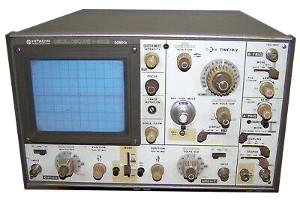 Wait a minute.
Searching the internet I've found out that it must have been a Hitachi V550B.
And the non standard brown knob appears to be standard after all.
Who would have thought?
Wait a minute.
Searching the internet I've found out that it must have been a Hitachi V550B.
And the non standard brown knob appears to be standard after all.
Who would have thought?
So for years I did my hobby, with about 4 Fluke multimeters, a home-made lab power supply, a home-made function generator and a second hand oscilloscope.
I never really did anything in HF, so HF gear I never owned.
I was able to buy a nice Philips PM6668 frequency counter and a variac from a colleague of mine, which made me very happy.
I had already worked with that type of frequency counter at my first employer.
In 2004, my then employer quit the repair business. Then I was able to take over some measuring equipment. That included a digital Tektronix and an analog Kenwood oscilloscope. That's probably when I said goodbye to my second hand oscilloscope. It also came with jet another Fluke 8010A DMM, and a couple of lab power supplies. Oh yes, and it also came with an audio generator and a Nakamichi audio analyzer.
Since our last move, I have gained some more lab space.
So now there is room for some more instruments.
Therefore I decided to make a vintage corner (no LCDs allowed) and a corner with some more modern stuff.
In the modern corner I have a Rigol oscilloscope, a 5½ digit Rigol multimeter and arbitrary function generator, an IIT Lab power supply (specially selected because it is not very deep), and recently an electronic dummy load.
And the Fluke 8010A and 8012A meters also belong in the modern corner, even though they're from the 1980's, including my PM6668 frequency counter.
Just because they have a modern looking LCD screen I suppose.
My vintage corner is slowly but surely expanding.
I wanted to have a multimeter with nixie tubes.
And for a reasonable amount, a Systron Donner was offered on an auction site.
Shortly thereafter I was offered a Philips multimeter with Nixie tubes for a bargain price by an old colleague of mine, whom I hadn't seen in about 30 years or so.
Now I have, unintentionally, two multimeters with Nixie tubes, nice.
By that same old colleague I was also offered a Philips Lab power supply.
Probably one of the first lab power supplies equipped with transistors.
The thing has nice neon lights for the CC and CV indication, not that LED rubbish.
Completely unintentionally I could also buy an analog HP frequency meter for next to nothing through him.
For years I had a new Fluke 8030A DMM lying in the closet.
The battery cover was missing.
Therefore it remained in the closet.
Through an auction site I managed to get a second instrument that was used as a battery cover donor.
From then on in a relatively short time I managed to expand my old Fluke collection with a frequency counter, an 8600A DMM and an 8000A DMM.
All these meters were still being produced when I worked at Fluke back in 1980.
Possibly I even put a QA stamp on one of them myself, that would be a coincedence.
I also wanted a couple of analog meters.
Some Philips analog multimeters were offered on an auction site for reasonable prices again.
I even bought a Fluke differential voltmeter.
It's amazing how it exactly agrees with the Fluke 8600A, for two instruments which both are 40+ years old!
KI’m sure I will not use it very often, but it is just a nice instrument and I can enjoy it.
In short, my lab is starting to become more and more complete.
Many of the old instruments still need some love to make them fully usable again.
That will take some time.
But I'd rather do that than watch 22 over payed fools give chase after one single ball, for example.
I think it's just a wonderful hobby to get those old things working again.
The instruments that have already been refurbished, or do not need to be refurbished, can be found below.
My lab is not yet complete.
So I hope to collect more nice instruments in the future.
Only I have resolved myself not to pay ridiculous amounts of money.
It has to stay fun.
I will also have to keep the number of large 19" devices to a minimum.
My bench space is not infinite.
